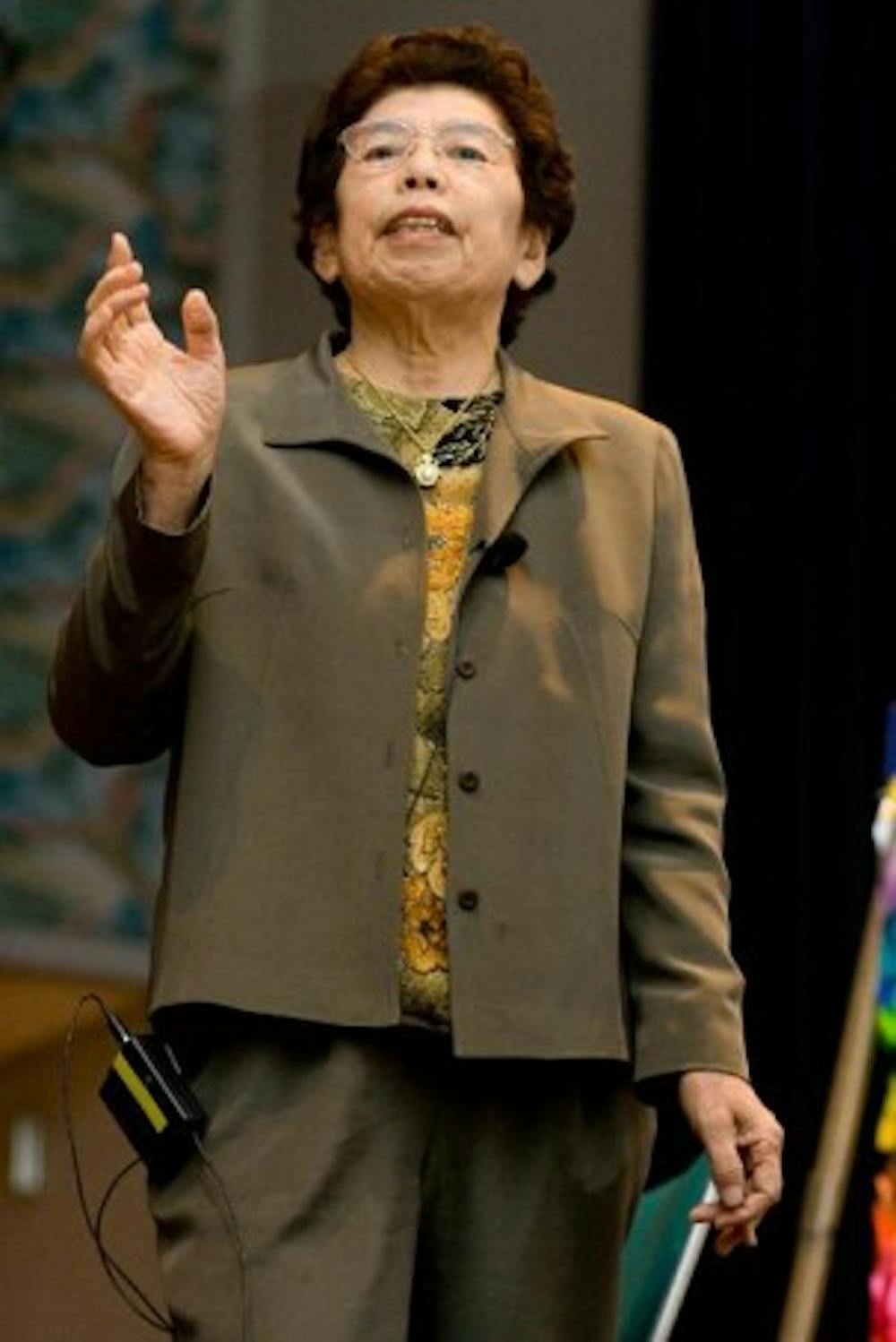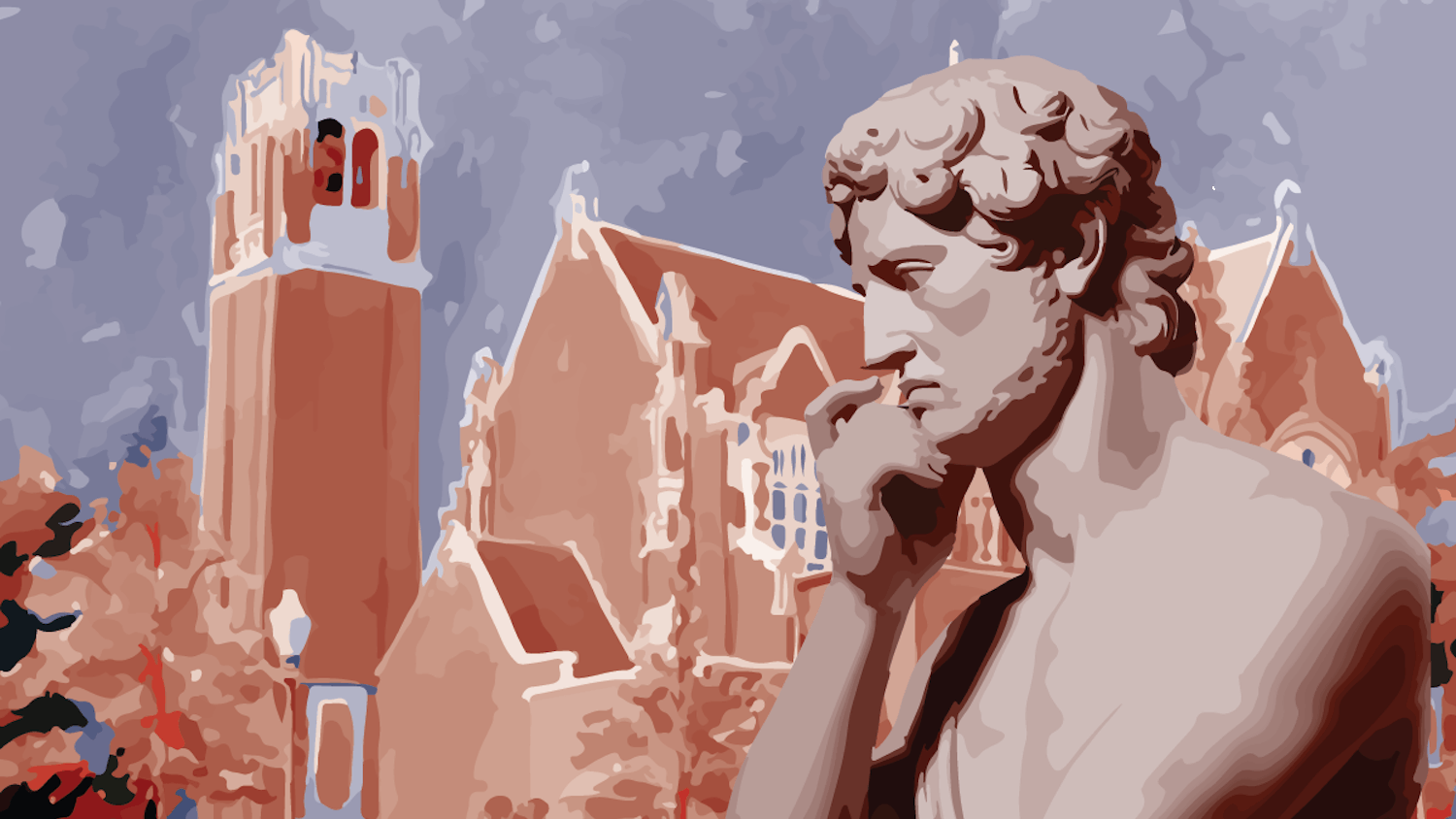The windows blazed a reddish burnt orange, and 13-year-old Sadae Kasaoka stood in her bedroom and thought about how pretty the glass looked. An instant later, the blast pummeled her into the wall while shards of glass pierced her skin.
Now 76 years old, Kasaoka recalls the atomic bombing of Hiroshima with the clarity of the young girl standing by the window.
Kasaoka, who lost her parents in the explosion, used a Japanese translator to share her memories with about 250 people at a gathering for a speech held in the Reitz Union Rion Ballroom on Thursday.
Kasaoka can still see her hands drenched in blood from head wounds, she said. She remembers running with her 92-year-old grandmother to an air-raid shelter after regaining consciousness, stepping over bits of blackened bodies along the way.
Kasaoka recalled the flames rising from charred bodies.
To her, those blue flames represented lost souls carrying lives, hopes and dreams, Kasaoka said.
"I feel that I was kept alive so that I could speak for them," she said.
Kasaoka still lives in Hiroshima but has been traveling with the program for the past three years.
Gainesville Mayor Pegeen Hanrahan called the program a "unique learning experience." Hanraham presented Kasaoka with a proclamation that recognizes the anniversary of the bombings over Hiroshima and Nagasaki and asserts the need for worldwide collaboration for peace.
The Voices for Peace events will extend through March 14 with a film series featuring Japan during the World War II era, running Feb. 29 through March 2, in Reitz Union Room 282. A nuclear bomb art and photo exhibit will also be displayed in the Reitz Union Gallery until March 14.
Amanda Siefman, a third-year Japanese language student, was touched by Kasaoka's story.
"I think the presentation was great," Siefman said. "It makes you see the human side, the reality of nuclear war. It's not a simple thing."






